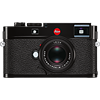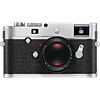Main
Model
Price
Advantages
launch
Announced
Body type
Camera subcategory
Sensor
Effective pixels
Max resolution
Sensor size
Sensor type
Processor
Image ratio w:h
Other resolutions
Sensor photo detectors
Image
ISO
Boosted ISO (minimum)
White balance presets
Custom white balance
Image stabilization
Uncompressed format
JPEG quality levels
Photography features
Minimum shutter speed
Maximum shutter speed
Aperture priority
Shutter priority
Manual exposure mode
Subject / scene modes
Built-in flash
External flash
Continuous drive
Self-timer
Metering modes
Exposure compensation
AE Bracketing
Flash modes
WB Bracketing
Screen / viewfinder
Articulated LCD
Screen size
Screen dots
Touch screen
Screen type
Live view
Viewfinder type
Viewfinder magnification
Videography features
Microphone
Speaker
Resolutions
File Format
Optics & Focus
Digital zoom
Manual focus
Lens mount
Focal length multiplier
Physical
Weight (inc. batteries)
Dimensions
Environmentally sealed
Battery
Battery details
Storage
Storage types
Connectivity
USB
HDMI
Microphone port
Headphone port
Remote control
Other features
Orientation sensor
Timelapse recording
GPS
Samples
Videos
Summary
The M-P (Typ 240) is equipped with bigger sensor compared to the M (Typ 262): Full frame (36 x 24 mm) versus Full frame (35.8 x 23.9 mm). It is the most important difference between these cameras as big sensor lets the photographer to shoot pictures of the more professional quality.
The M (Typ 262) screen is better as it has more screen dots 921,000 in compare to 920,000 dots of the M-P (Typ 240) screen. The higher dot count screen is better for reviewing pictures on your camera. The Leica M-P (Typ 240) offers a very useful live view feature which lets the camera owner to use the screen as a bigger viewfinder.
The M-P (Typ 240) has 4 advantages and the M (Typ 262) only 2 so the M-P (Typ 240) will be the best choice. Get the lowest price on Amazon.


